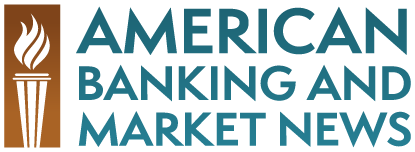 The Trump Administration has been pushing for sweeping tax cuts from 35% to 20%. According to the president, these proposed tax cuts will reduce the burden on American corporations, allowing them to hire more workers, invest more in the US economy, and become internationally competitive. Additionally, Trump indicated that an overhaul of current tax legislation would put an additional $4,000 into the pockets of middle income families. Democrats and Republicans are split on Trump’s tax policies, and naysayers are unconvinced. A Washington DC think tank by the name of Urban Brookings Tax Policy Center believes that the benefits of proposed tax changes would be limited to those on the upper end of the spectrum – the big banks, corporations, and Wall Street players.
The Trump Administration has been pushing for sweeping tax cuts from 35% to 20%. According to the president, these proposed tax cuts will reduce the burden on American corporations, allowing them to hire more workers, invest more in the US economy, and become internationally competitive. Additionally, Trump indicated that an overhaul of current tax legislation would put an additional $4,000 into the pockets of middle income families. Democrats and Republicans are split on Trump’s tax policies, and naysayers are unconvinced. A Washington DC think tank by the name of Urban Brookings Tax Policy Center believes that the benefits of proposed tax changes would be limited to those on the upper end of the spectrum – the big banks, corporations, and Wall Street players.
According to the Tax Policy Center, the top percentile of the US economy would enjoy windfall benefits with an average income increase of 8.5%, amounting to $130,000. This income benefit is limited to those earning $730,000 + per year. After-tax incomes for the top 0.1% of earners in the US (those generating $5 million + per annum) would enjoy even better after-tax benefits of 10% or at least $500,000 per year. As we move down the income ladder, the bottom 95% of households would enjoy an increase in income of just 0.5% – 1.2%.
In dollar terms, that translates into just $60 in after-tax income increases for the bottom 20% of the US population earning up to $25,000. Those earning between $48,600 and $86,100 would enjoy an after-tax income increase of 1.2%, or $660. The top 20% of people – those earning $150,000 + would enjoy an income increase of $8,470, or 3.3%. As with all new tax proposals, the devil is in the details. According to the Republican framework, local tax deductions and state deductions will be repealed, meaning that people will be paying more taxes overall, despite the tax cuts that are slated to take place. According to the data, 60% of people generating $150,000 – $300,000 will be paying more tax by 2027, and 30% of people generating incomes between $50,000 – $150,000 will be paying more tax by 2027.
Will Bank of America and Other Big Banks Benefit from Tax Cuts?
Wilkins Finance bank stocks expert Paul Gladstone commented on the 2-pronged policy of cutting taxes and raising rates, ‘When rate hikes are brought into the picture through the Fed, banks will enjoy the dual benefit of charging more and paying less. On Wednesday, 13 December 2017, the Fed is expected to hike interest rates by 25-basis points. When this happens, bank stocks will get bumped up a notch, moving into 2018. For investors bank stocks certainly look like a value proposition, but the mercurial nature of Washington politics should give everyone pause.’
A bank generating $250 million in pre-tax profits every year can be expected to pay $87.5 million in profits at 35% tax, and just $50 million at 20%. This rudimentary example indicates how big banks benefit from tax cuts. Of course, the accounting is not so simple, and most banks have their money and assets invested in such a way that they are not paying 35% regardless of the current tax rate. One bank stands to benefit more than most – Bank of America. In 2016, BOA paid $7.3 billion in income taxes. Banks use tremendous leverage in their dealings, with $10 in assets for every $1 in shareholders equity.
This means that a bank with $100 million in shareholders equity can have assets worth $1 billion. Apple Incorporated has a much lower leverage ratio of just 1:2.50. Since Bank of America paid a staggering $7.3 billion in income taxes in 2016, a reduction from 35% to 15% would leave the bank with $3.5 billion more in income. Unfortunately, buying BOA stock right now is disingenuous since the price already reflects the tax cuts. If Trump’s tax plan gets shelved, Bank of America, Wells Fargo & Company, Citibank, JPMorgan, Goldman Sachs and the rest could be due for a major correction and that will rock the financial markets in a big way.


